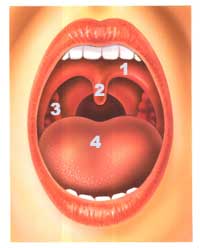 When we first start to sing, we do so instinctively. We just open our mouths and make a noise. Sometimes the instinctive noise we make sounds good, and sometimes it isn’t so great. Whether the noise that you, individually, make is a good or a poor sound is pretty much a case of good or bad luck. It is not that most insidious of things, “talent” (for what it’s worth, I don’t believe it exists, it’s all about hard work in my book…), and you should absolutely not believe someone if they tell you that.
When we first start to sing, we do so instinctively. We just open our mouths and make a noise. Sometimes the instinctive noise we make sounds good, and sometimes it isn’t so great. Whether the noise that you, individually, make is a good or a poor sound is pretty much a case of good or bad luck. It is not that most insidious of things, “talent” (for what it’s worth, I don’t believe it exists, it’s all about hard work in my book…), and you should absolutely not believe someone if they tell you that.
Some people just have the kind of speaking voice that translates well into singing. They do all the correct muscular things in their mouth and throat without even thinking about it, because that’s how they speak. They find notes easy to copy because their mouths and throats are in the right positions. This isn’t talent – it’s luck. They’ve been taught to talk that way. Others – not so much.
The good news is that you can absolutely get those good habits in place whether you do them instinctively or not. What I want to talk about today is singing with an “open throat”.
There is a lot of “spirited discussion” about what an open throat actually is, and whether it is a good thing. I’m going to tell you my opinion (because, hey, it’s my blog!) but do feel free to disagree or do your own research as seems appropriate.
When teachers tell you to sing with an open throat, they are asking you to pay attention to the back of your mouth – particularly the soft palate and back of the tongue. Try to drop the back of the tongue as if the doctor had a tongue depressor on it, and lift the soft palate. The feeling that you are aiming for is the very beginning of a yawn, but without any tension or stiffness in the muscles of your throat and mouth. Please note that the feeling you are aiming for is most emphatically NOT the feeling right at the pinnacle of a yawn. When you actually yawn, you expand your throat muscles and squash your larynx/voice box low down into your throat, which is not the position that you want it in. Nothing should feel tight or under pressure. Everything should feel loose and comfortable.
My favourite exercise for opening the throat is “Wicked Witch versus The Sloane Ranger” (I suspect that ‘The Sloane Ranger’ as a term is only instantly recognisable to those of us who remember Princess Diana as “Lady Di”…). What I want you to do is this:
Remember The Wicked Witch of the West? Remember that nasty little cackle she had? I want you to copy that cackle. It’s high and channelled through your nose. “Heheheheheh…” That feeling right there? That’s the feeling of a constricted, tight throat. You can probably reach some of your higher notes when making this noise. Now, pretend to be a Sloane Ranger or other similarly posh person. Make this noise, “Okay, Yaaaaaaaaaah.” You will note that your voice goes down, your tongue drops and your soft palate rises. But not so much that it is squishing your larynx and making your throat sore and your voice sound weird.
Once you’ve done this for a few minutes, I really recommend trying to sing something silly and easy that you know well, but keeping those feelings in place (repeat the exercise if you feel you are losing the throat shape), but be very aware of not giving yourself a huge double-chin, or making yourself uncomfortable. All the sensations should be soft and comfortable, not overblown and difficult to maintain.
Another way of thinking about this exercise (particularly if you have a problem with the imagery and associated sounds) is to try and imitate a donkey: “Heeeeee- HAW”. The throat will react the same way, but do be sure to do the exercise *slowly* – give each sound a good 3-5 seconds before moving onto the next sound, and think about what your mouth and throat are doing as you make the sound.